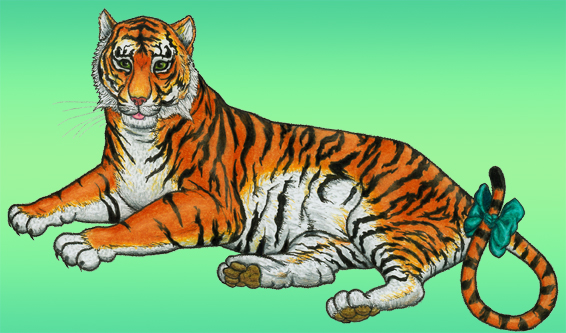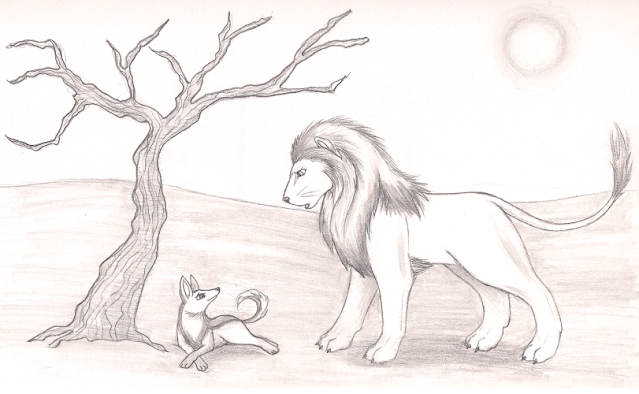(Possible) Origin of the Hungry Tiger of Oz
When The Wonderful Wizard
of Oz written by Frank Baum was published in 1900 it became an instant
success, selling all 10,000 copies that were printed in its fist edition. The
story focuses on Kansas girl Dorothy and her dog Toto who have been whisked
away to the land of Oz by a cyclone. She strives to return home with Toto by
seeking the help of the Wizard of Oz. Along the way they make friends with
unforgettable characters such as a Scarecrow who wants a brain, a Tin Woodsman who
wishes for a heart and a Cowardly Lion who seeks to be brave while meeting
various peoples, making allies and fighting enemies all to gain what they seek
from the Wizard of the Land of Oz. While Baum wrote the book without any thought
of a sequel, the public, especially children loved it and wanted to know more
about the Land of Oz so due to popular public demand, the success of the book
led to the creation of 13 sequels written by Baum until his death in 1919,
after which his family and illustrators continued writing Oz books. The sequels
introduced new heroes and villains. Among the new heroes was a Tiger known
simply as ‘Hungry’ or more popularly, the ‘Hungry Tiger’ because as his name
suggests, his appetite is almost insatiable, and he can think of nothing but
food. He is perhaps best known for wanting to eat a new-born child but refuses
to do so because his conscience will not allow him. He often shows interest in
eating those who he confronts or is up against but knowing he is one of the
many important figures in Oz, he always heeds when told not to eat his enemies;
this keeps him hungry all the time. He and the Lion are sometimes charged with
pulling Princess Ozma’s chariot. Princess Ozma is a new character like the
Hungry Tiger. She was appointed ruler by the Wizard in his absence. Unlike the
Lion, the Tiger is reluctant to pull Ozma’s chariot and while complaining about
it, tries to justify this by pointing out that he and the Lion are Lord and
King of the animals respectively and the Lion always tells him that Ozma is
more superior than them, thus they have to pull her chariot. Sometimes the Lion
and the Tiger even serve as the mounts of the Scarecrow and the Woodsman
respectively as the Scarecrow sometime rules the Land of Oz while the Wizard is
absent, and the Tinman rules the land of the people known as the Winkies.
There is a debate as to whether the Hungry Tiger made an
appearance towards the end of the first Oz book where shortly before the Lion
is appointed king of animals he is approached by the ‘biggest of tigers’ who
tells the Lion of a spider that has been terrorizing the jungle. The Lion sets
out to battle against the spider and emerges victorious. This theory is
supported by radio writer and scholar John Frederick ‘Jack’ Snow who would
eventually join the Baum Family and Baum’s illustrators in continuing the Oz
series by writing The magical mimics in
Oz and The shaggy man of Oz in
1946 and 1949 respectively. While this debate continues, the character undoubtedly
made an appearance in Ozma of Oz
where he is part of Princess Ozma’s party to save Dorothy and her hen Billina
from the head-switching Langwidere and the former Wicked Witch of the North,
Mombi. He continues to be part of Ozma’s party to save the Royal Family of Ev
and Toto from the Gnome King. Since then he has appeared in almost every Oz
book and two of them also have him as title character The Hungry Tiger of Oz and the short story The Cowardly Lion and The Hungry Tiger.
When Baum created the Cowardly Lion for the first Oz book,
it must have been an easy process since the Lion is more popular an animal than
the Tiger and for centuries has earned a place in the world of man as much as
in the world of animals, where he is seen as king of the animals in both. Thus,
be it a rivalry or mutual respect, the relationship between Lions and famous
people is a recurring motif in both mythology and fact and it was easy to
create a Lion for the story. Even though a Tiger made an appearance in the
first Oz book, it was a minor part and the Hungry Tiger may have been a harder
character to create although Baum probably went through the same process as he
did when doing research on Tigers for the character much as he did when doing
research on Lions for the Cowardly Lion.
Baum, like many people, probably considered the Lion to be
his favourite animal when he visited the zoo and it was no trouble including
the king of the animals to be one of the heroes of his first Oz book although
he may also have seen the Tiger at the zoo and when writing the third Oz book,
might have considered adding the Tiger in the book. At that time, Tigers were
coming into the United States as entertainers to be either owned or in circuses
or for captive displays in zoos. Baum may have read about gladiator combats in
the colosseum of ancient Rome involving both Lions and Tigers released against
guilty prisoners or gladiators. It is a known fact that Lions were the
preferred animals to be selected for combat in the colosseum and Tigers were
only a second choice although not given the same opportunities as Lions would
be when pitted against men. Since Africa, (particularly East Africa where most
Lions in the United States came from during the 1900s) was a magnet for people
worldwide, this was another contribution to Baum’s creation of the Cowardly
Lion. However, since there are no Tigers in Africa, Baum had to look to India
and Asia where the Tiger roams in order to get an understanding of Tiger facts.
Much as the Lion was a popular animal for trophy hunting in Africa, the Tiger
was also considered a popular hunting trophy in India. Indian maharajas enjoyed
hunting Tigers and so too did the British who were ruling India at the time.
Many people in parts of Asia such as Sumatra and Java also told of their deadly
encounters with Tigers which were common. The first instance of Tiger
popularity in literature and that too sharing a deadly and negative relation
with man came with Indian-born British author Rudyard Kipling’s The Jungle Book where the main villain
was a Tiger known as Shere Khan, the persecutor of the title character Mowgli,
a boy who was raised by wolves in the Central Indian jungles of the Seonee.
Baum might have realized that unlike the Lion which embodies traits of
positivity as well as the complete opposite, the Tiger is viewed more as a
villain much as was the case with The
Jungle Book. Even though a Tiger made a minor appearance towards the end of
the first Wizard of Oz book, early chapters depicted the Kalidah, an animal
that was half Tiger and half bear that rivalled the Cowardly Lion.
Accounts of Lions attacking humans may have served as a
triggering point for Baum to turn the Lion into a hero when he read engineer
John Henry Patterson’s 1907 autobiography The
man-eaters of Tsavo about how
Patterson’s work on building a bridge of the Uganda Railway in the Tsavo region
of what is now Kenya (in East Africa) was put on hold when two Lions killed about
35 workers, prompting Patterson to take it upon himself to kill these two Lions
after a lengthy but difficult pursuit. Baum may have also recognized the
lighter side of conflict between Lion and man in mythology when he read the
biblical story of Daniel who was cast into a Lions’ den and emerged unharmed
due to his faith in God. Another story that explored the lighter side of the
conflict between Lion and man that may have inspired Baum could be the twelve
labours of Hercules which were to be performed for accidently killing his wife
Megara and their children because of the manipulation of his jealous stepmother
Hera. The first of these labours was to kill a Lion known as the Nemean Lion
whose skin could not be pierced by weapons, so Hercules choked the Lion to
death after which he wore the skin of the animal to protect himself for the rest
of his twelve labours. Upon completion of the labours and after Hercules
married Hera’s daughter, Hera placed the Lion in the stars where he became the
star sign Leo. The Aesop’s fable Androcles
and the Lion about a friendship between a Lion and an escaped slave was
also a positive story about the relation between man and Lion. Aspects of Lion
conflict in these stories of fact and mythology could have inspired Baum to
include the Lion as a hero in the first book about the Land of Oz.
In the case of the relation between Tiger and man, there seems
to be no positive evidence, both in mythology and fact. For example, in The Jungle Book Shere Khan met his
end at the hands of Mowgli who with the help of his wolf brothers chased a herd
of buffalo into trampling and killing the Tiger. In further relation to The Jungle Book, it is known that
Kipling borrowed inspiration from the Seonee jungles of Central India which are
now the Kanha-Pench-Satpura ecosystem. Before
these reserves came into being, they were visited by a friend of Kipling,
naturalist and statesman, Robert Armitage Sterndale who wrote several books
about the fauna of India along with his own experiences about Indian wildlife
in Camp Life on the Satpura Range
which inspired many scenes in Kipling’s stories about Mowgli and evidently
included encounters with Tigers.
In both cases of creating a Lion and a Tiger for the Land of
Oz, Baum may have sympathized with the notion that big cats such as Lions or
Tigers turn to man-eating because they are unable to hunt for their usual food
due to old age or emaciation although some turn to man-eating because they find
man easier to hunt. However, man-eating is more common in Tigers than in Lions.
Based on this Baum decided to give traits of hunger to his Tiger character in
the Land of Oz but this particular Tiger has a sense of morality and will not
carry out any (cruel) acts based on his hunger.
All said and done, the Hungry Tiger is one of the most interesting
and successful characters in the Land of Oz.
The End




Comments
Post a Comment